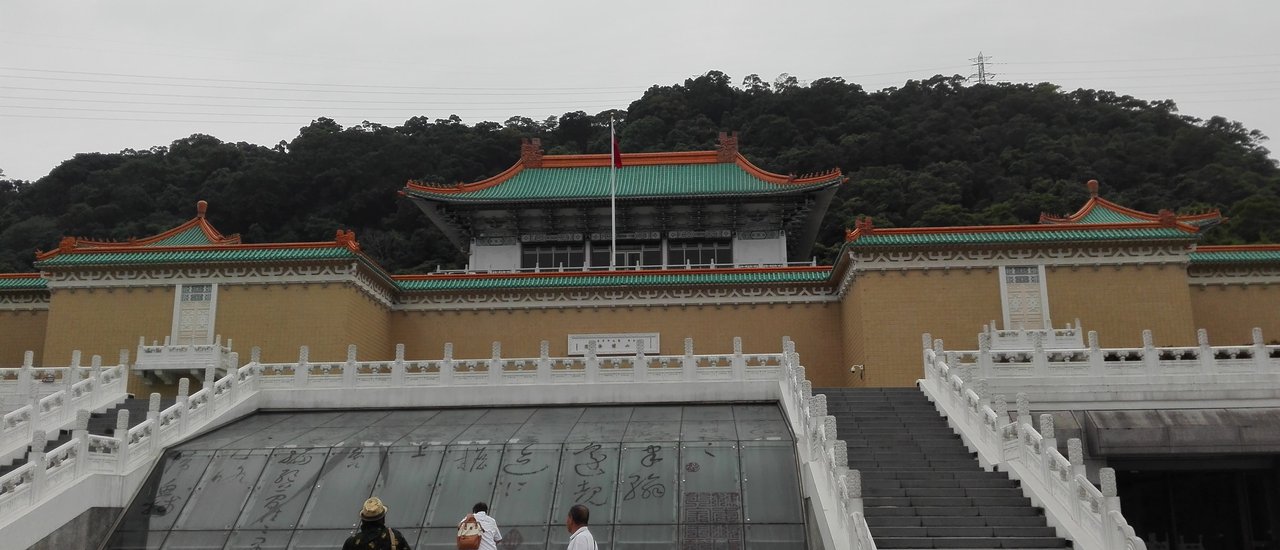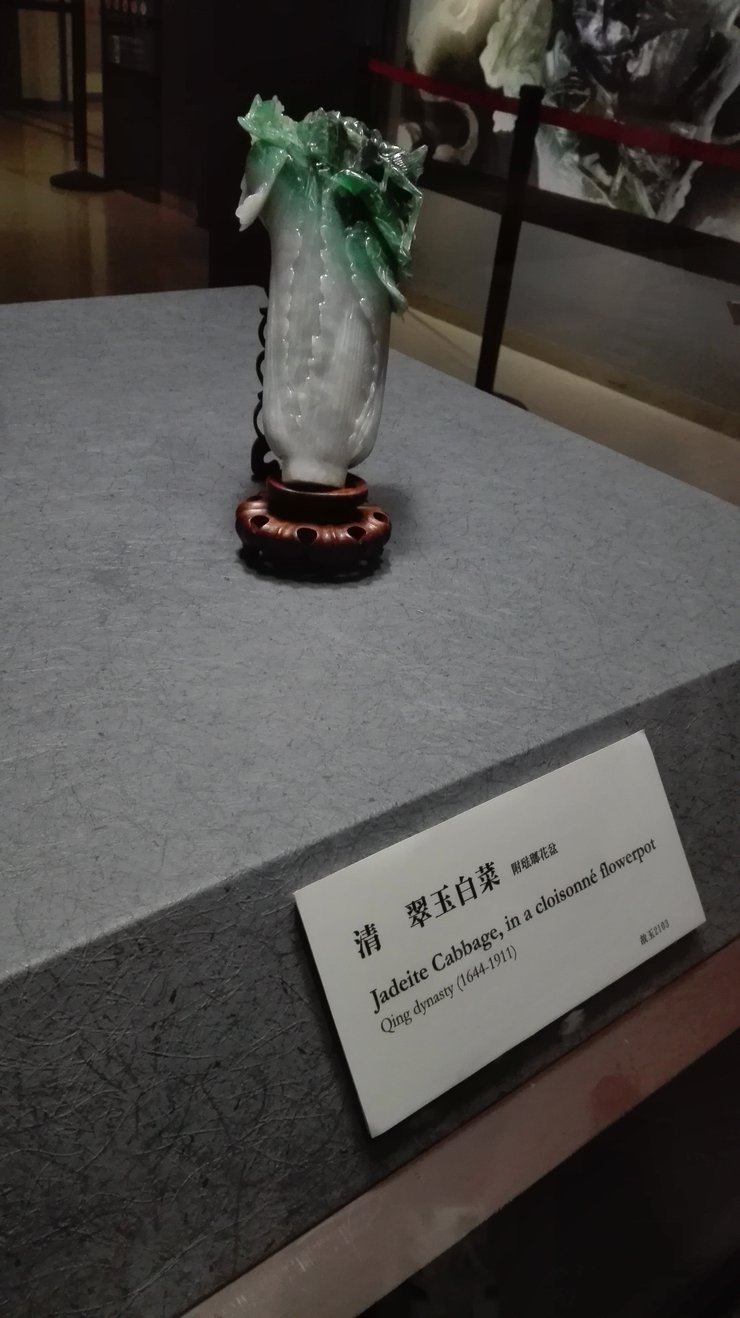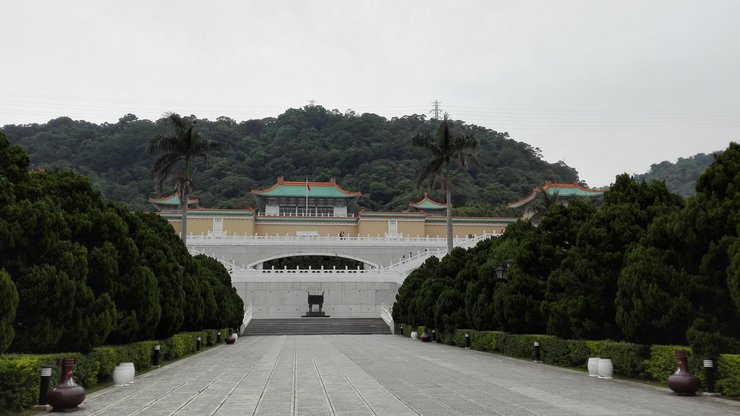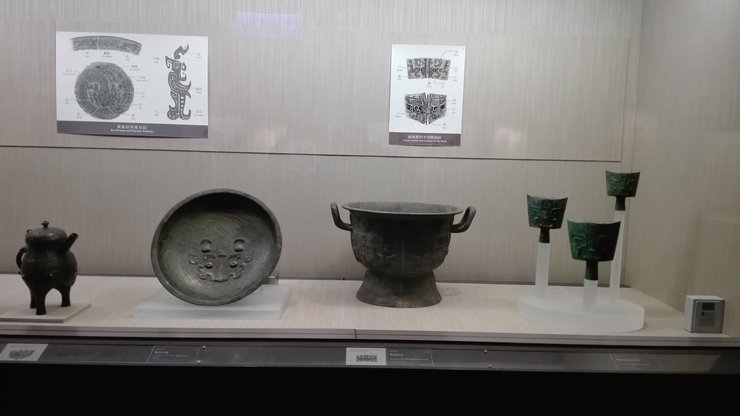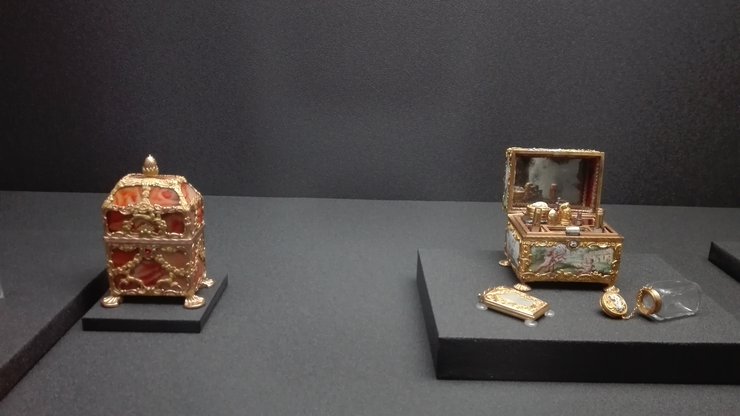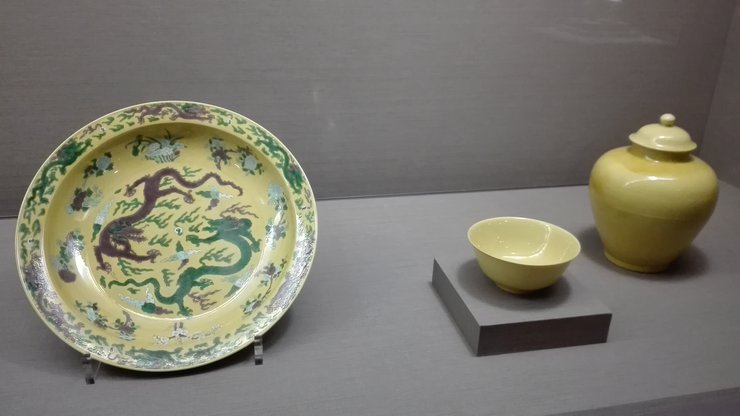The National Palace Museum, also known as the Gugong Museum, houses a vast collection of Chinese imperial treasures. These treasures were brought to Taiwan by Chiang Kai-shek and his followers during the Chinese Civil War. The museum's collection is so extensive that it cannot be displayed all at once. As a result, a second branch of the museum has been established in southern Taiwan, in the city of Chiayi. This branch houses some of the museum's most prized possessions, including the famous Jadeite Cabbage. To reach the southern branch, visitors can take the Taiwan High Speed Rail (HSR) to Chiayi. From there, a free shuttle bus will take them directly to the museum. It is important to note that the Taiwanese people refer to the HSR as "Gaotie" and the Taiwan Railway Administration (TRA) as "Taitou".

Facing away from Shilin Station, walk straight out of Exit 1. You will see a Watsons store on the right-hand corner.
To reach the National Palace Museum in Taipei, take the MRT to Shilin Station Exit 1. Upon exiting, you will find a Watson's store on your right. Turn right and wait for the bus at the bus stop in front of Watson's. Several bus routes go to the National Palace Museum, and the bus stop displays the routes in English. The buses that pass by are R30, 304, and 815. We only remember these three routes because the 815 bus arrived shortly after we arrived at the bus stop. The journey takes approximately 10-15 minutes, and the bus stops directly in front of the museum. Additionally, you can enjoy a discounted fare. If you use an EasyCard for both the MRT and bus within 2 hours, you will receive an 8 NT discount on your bus fare.


To visit this museum, it is recommended to arrive early in the morning. We arrived around 9:15 AM, and the museum is open from 8:30 AM to 6:30 PM (open until 9:00 PM on Fridays and Saturdays). We are unsure if the museum offers free admission after 6:30 PM on Saturdays. To be safe, it is advisable to pay the entrance fee. Upon arrival, it is recommended to take a bus route other than R30 to the museum, as this route will take you directly inside the building. Other routes will stop in front of the museum, allowing you to take photos of the beautiful scenery. In the morning, there are fewer people and the sun is not as hot. However, if you are accompanied by elderly individuals, you may take the R30 bus to avoid excessive walking. After taking photos at the front, walk up the stairs and enter the building. Although it may seem less crowded outside, there are a moderate number of people inside, with some tour groups arriving. Upon entering, you can purchase tickets at either the left or right counter. The current ticket price is 250 NT. When purchasing tickets, the staff may inquire if you have a student card for a discount. After purchasing your tickets, walk to the far right to store your belongings in a locker. Please note that you are not allowed to bring bags inside. You will need a 10 NT coin to use the locker. After storing your belongings, ask the staff at the locker if you can bring a pen and notebook inside. They will likely nod in agreement. Then, proceed to view the artifacts inside. At the entrance, show your ticket to the staff, who will tear off a portion and return the remaining part to you.
We decided to walk up to the top first because the highlight, jadeite, is on the 3rd floor. We were afraid that there would be a lot of people and we wouldn't be able to see it closely. And walking from the top floor down would be easier for us. If you want to take the elevator, after passing the ticket inspector, turn right. When we arrived on the 3rd floor, we started from the room on the edge and planned to go through each room in order so that we wouldn't be confused about which rooms we hadn't been to yet. The first room we entered was an exhibition room about bronze metalwork. After walking around for a while, we saw someone taking pictures. We talked to our younger sibling about why they were able to take pictures, or if they had asked for permission. But then, it seemed like two or three other people walked in and started taking pictures too. We were hesitant because this museum had previously prohibited photography. Then, last year (2016), they allowed photography for a while. From what we read in the reviews, they said it was allowed until December of last year. But when we started seeing more people taking pictures and the staff didn't say anything, we decided to ask them to clear up our doubts. We asked the staff if it was okay to take pictures now. They said yes, but no flash photography. We then asked if we could go out and get our phones, and if showing our tickets would be enough. They said we didn't need to use our tickets, but to have our hands stamped at the exit when we leave. They said we could then enter and exit the museum throughout the day. So, it was a good opportunity for us to come when they allowed photography. We went out to get our hands stamped before leaving. You might have to hold out your hand for them to stamp it, otherwise they might think you've already finished your visit and might not stamp it.

The photo of the Jade Market is not very good because it was taken through glass and there were many people waiting to take photos.
After exiting to take photos and returning, we reached the jadeite display, located in the central room of the floor. We noticed a tour group queuing in front of the room, with a guide providing commentary. The staff had left a small gap in the rope barrier for individual visitors to enter first. Shortly after we entered, a crowd began to gather. Fortunately, the tour group was small. This is why it's advisable to arrive early, as the queue had grown significantly when we passed by the room again later. The small gap that was previously open for individual visitors had also been closed. The upper floor showcased various jade artifacts, along with exhibits explaining the origin and processing of jadeite. Jade is a remarkably hard stone.

The museum provides detailed descriptions of the artifacts on display. As shown in the image above, there are paper sheets replicating the patterns found on the metal containers. For example, the paper sheet on the upper left-hand side explains that the pattern found on the metal container is a phoenix. The image explains which parts represent the head, body, and wings.
We spent a considerable amount of time on the third floor, having read reviews that suggested the second floor was less interesting, primarily featuring paintings. The first floor was said to be even less noteworthy. However, upon personal observation, we found all floors to be captivating. The bronze artifacts, which we initially anticipated as the highlight, became the least intriguing aspect. We were overly influenced by reviews and consequently spent an extended period with the jade collection on the third floor, which boasts an extensive and intricate display. The intricate carvings on each piece, considering the hardness of jade, left us in awe of the craftsmanship.

The second floor showcases a wide array of ceramic and pottery items, including decorative pieces, small ornaments, and a selection of jewelry.


The Other Side of the Story: Unveiling the Beauty of Chinese Poetry and Calligraphy
The other side of the exhibition showcases a captivating array of written works, including calligraphy, poems from various eras, and even collaborative poems composed by scholars. Paintings accompanied by poems, individual poems, and more are on display, igniting a desire within us to decipher the Chinese language and appreciate the elegance and beauty of its verses.
This section also features a fascinating display of ancient texts and translations of pictographic Chinese characters, demonstrating their evolution into modern characters. Additionally, precious books are exhibited, offering a glimpse into the rich literary heritage. For children, an interactive zone provides an opportunity to colorize ancient paintings recreated as digital graphics, fostering a playful engagement with history and art.





Descending to the first floor, we encountered an exhibition of furniture, gold ornaments, and various accessories, including Buddha statues, deity sculptures, and other intriguing artifacts. Our fascination with the museum led us to exceed our planned departure time of noon. By then, we had yet to fully explore the exhibits. (We spent too much time taking photos!) On the first floor, we hastily reviewed and photographed the exhibits, as our companion had been waiting patiently for some time. One of the museum's impressive features is the ample seating and restrooms available on each floor. We finally completed our tour after 1:00 PM. We then proceeded to the ground floor, where a larger souvenir shop was located compared to the one upstairs. We briefly browsed the shop but did not make any purchases. Exiting through the main entrance, we initially intended to take photos of the building's exterior on our way back. However, we were exhausted and decided to wait for the R30 bus instead. The bus stop is located on the left-hand side as you exit the building. We noticed several people waiting there as well. Initially, we saw a bus arrive and allow passengers to disembark. We assumed it was the end of the line and that we would need to wait for another bus. However, seeing others walk towards the bus, we impulsively followed suit. (We thought we might need to board the bus at its starting point.) As we approached, the driver gestured for us to return to our original waiting spot. Oh well! We shouldn't have followed the crowd. Shortly after, the R30 bus arrived at the stop. We boarded and returned to Shilin Station as planned. (Note that the R30 bus does not terminate at Shilin Station. Pay attention to the route and the display on the bus. Don't get lost in your thoughts!)

The bus stop where the bus is parked in the picture is the last stop for the R30 route. The bus stop for the return trip is located in this area.

A notable feature of prices in Taiwan is the presence of numbers within square brackets. As illustrated in the image above, a box of papaya milk costs 35 NT. Most items in Taiwan display prices in this format, facilitating easy identification even without explicit price tags.
Before getting on the train, we stopped by 7-Eleven to recharge. We only drank one box of papaya milk, which was very filling because it was a large box. The taste was also good, fragrant and sweet, but not too sweet. My younger sibling walked past Watsons to the train entrance, where there was a pancake shop called "ต้นหอม" selling other things as well. As far as I could see, there were two shops. One looked older and had a lot of customers since we arrived. But because we were hungry, we bought from the shop with fewer people. I only had a small taste because I was full from the papaya milk. The taste was good. After that, we took the train and got off at Xingtian Temple Station. We got another NT$8 discount on the fare because we transferred from the bus. Our next destination, according to our plan, was the Taipei Fish Market, which I will write about in another part.
Note: The photos in the museum review may not be as numerous or as beautiful as the real thing. I encourage you to visit the museum in person to see the many beautiful artifacts on display. If you have time, there is a garden next to the museum that is beautifully landscaped according to Chinese feng shui principles. This garden is called Zhi Shan Garden. The entrance fee to the garden is 20 NT, but if you have a museum ticket, you can enter for free.
Mudan Peony
Tuesday, October 8, 2024 11:28 AM

